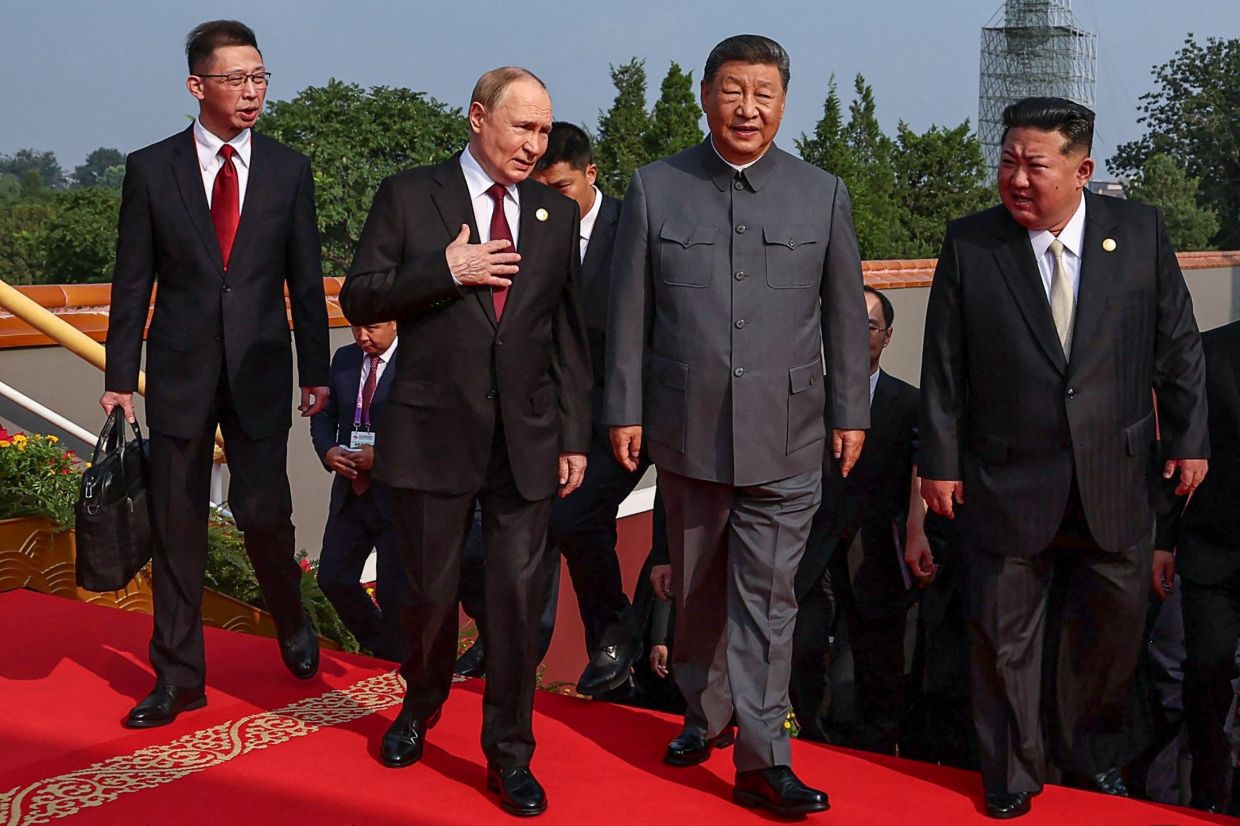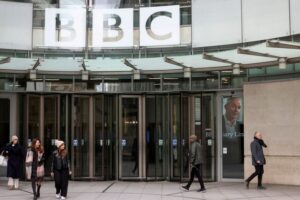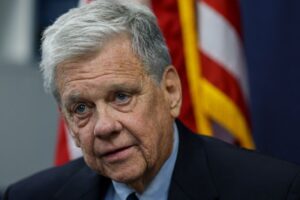China hosted two dozen world leaders for a huge military parade in Tiananmen Square on Wednesday to mark the 80th anniversary of the end of World War II.
It was only the second time Beijing has held a Victory Day parade, the first taking place a decade ago.
The parade – which started at 9am and lasted nearly 90 minutes – was viewed by many as a showcase of China‘s growing military strength. But it was also an attempt by Beijing to cement its global leadership status and to show its rising diplomatic clout.
In an opening address, President Xi Jinping said the Chinese people “firmly stand on the right side of history and the progress of human civilisation”. He touted his “strong and self-reliant” country as a “great nation that fears no violence”, and said the “rejuvenation of the Chinese nation is unstoppable”.
Below are some key takeaways from Wednesday’s parade.
1. Xi with Putin and Kim
One prominent scene was of Xi walking down the red carpet to the rostrum with Russian President Vladimir Putin on his right and North Korean leader Kim Jong-un on his left. They were seen smiling and talking.
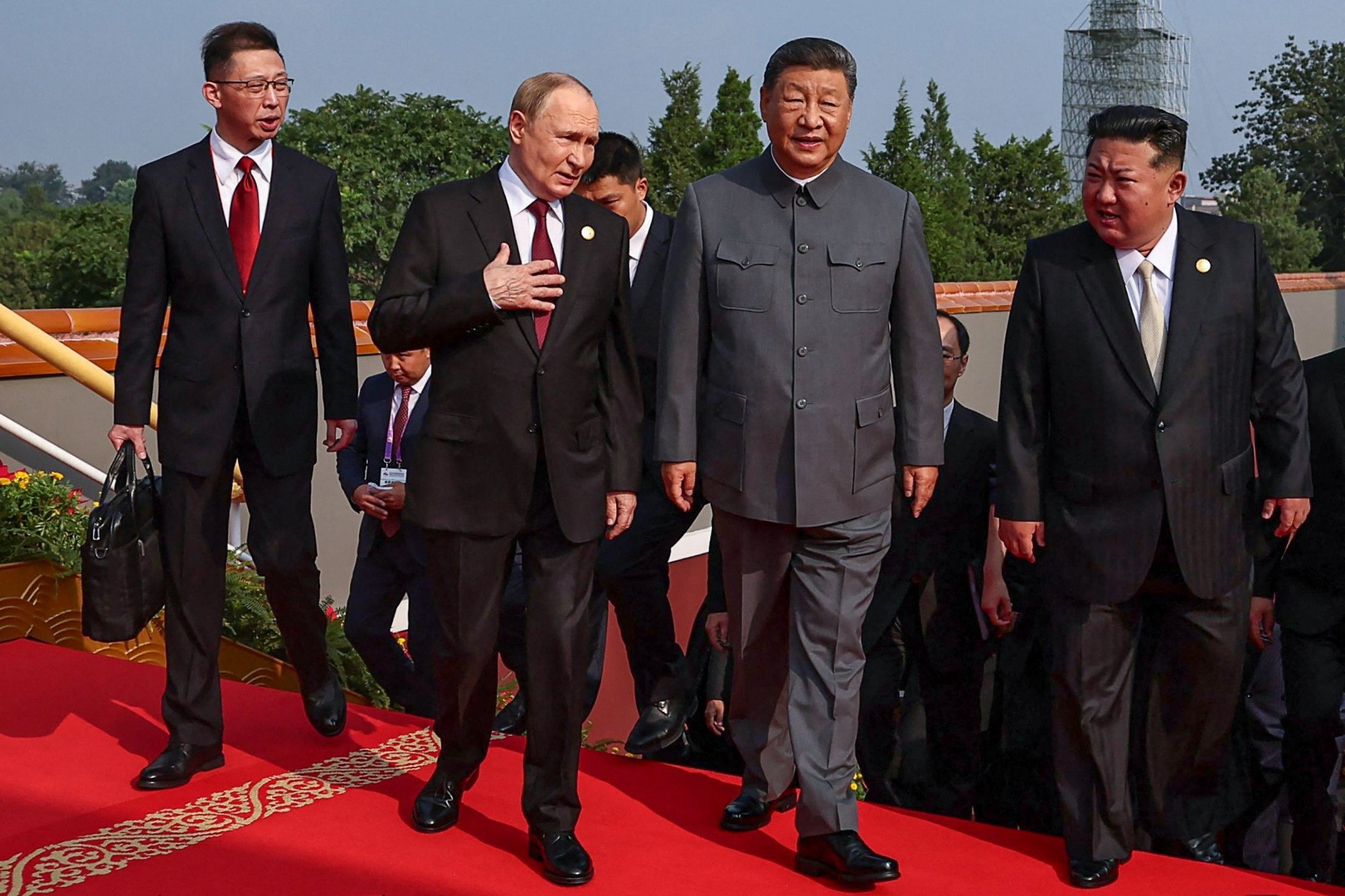
It was the first time Kim, Xi and Putin – all seen as rivals of the United States – have gathered in the same place, sending a strong signal of unity against the US-led West.
It was also the first time that Kim, who arrived in Beijing on Tuesday by train, has attended a major multilateral event.
US President Donald Trump, who was not there, posted on social media asking if Xi would mention the contribution of the United States in the war and wished the Chinese leader “a great and lasting day of celebration”. Trump also asked Xi to “give my warmest regards to [Putin and Kim] as you conspire against the United States”.
2. Military showcase
Wednesday’s parade offered a chance for China to show its military prowess, as thousands of soldiers marched down Tiananmen Square and the People’s Liberation Army displayed some of its latest military hardware not seen by the public before.
In his address, Xi said the PLA “has always been a heroic army that the party and the people can completely rely on” as he called for officers and soldiers to “accelerate the building of a world-class military” and “resolutely safeguard national sovereignty”.
The parade involved formations from various military branches – including the PLA Army, Navy, Air Force, Joint Logistics Support Force and Rocket Force – as well as newly established branches such as the Aerospace Force.
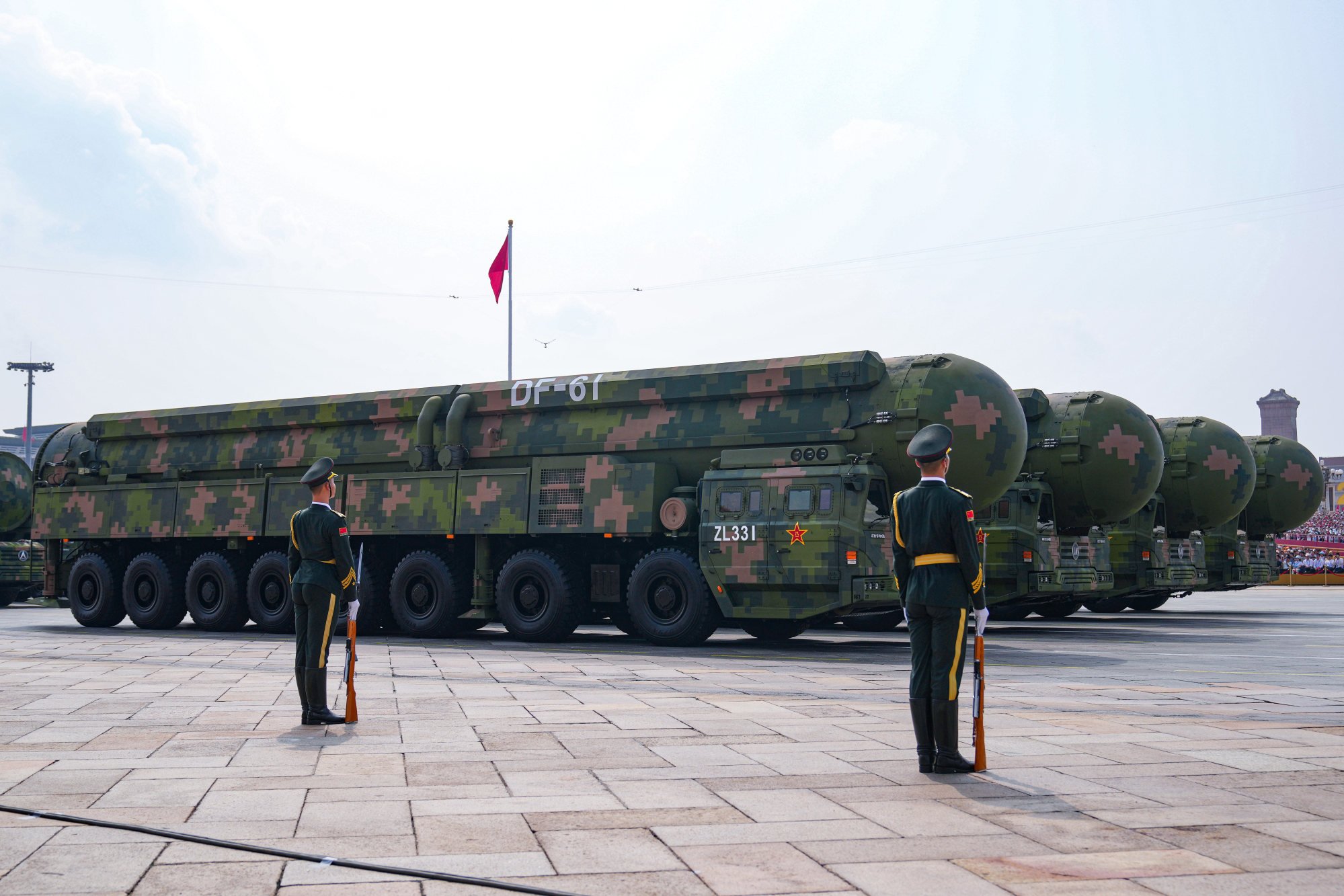
Beijing also used the event to showcase various land-based weapons systems, unmanned aerial vehicles and missile systems. It has said all systems seen in the parade were in service already.
A key highlight was the debut of the DF-61, believed to be China’s most advanced intercontinental ballistic missile after the DF-41. The DF-61 is expected to be part of the PLA Rocket Force’s long-range missile operations.
Also appearing for the first time was the JL-3, a new third-generation, intercontinental-range submarine-launched ballistic missile, crucial for the PLA’s sea-based nuclear deterrence operations.
3. Future warfare
The parade through the heart of the Chinese capital showed that the PLA is not just playing catch-up with the West but preparing for future warfare.
In what was its largest display of drone weapons, the PLA debuted the GJ-11, an unmanned combat aerial vehicle designed for precision strikes and aerial reconnaissance missions. It features a stealthy design with a tailless flying wing and two internal weapons bays.
Official broadcaster CCTV spoke of the “loyal wingmen” drones on display, meaning they are paired with crewed aircraft – a trend all leading militaries are pursuing.
Multiple rocket launcher the PHL-16, also known as the PCL-191, was also on display. It’s referred to as the mainland Chinese version of Lockheed Martin’s High Mobility Artillery Rocket System (Himars) that Taiwan has bought and deployed. It is believed it would play a significant role in the event of contingencies in the Taiwan Strait for its long-range strike abilities.
4. Nuclear focus
A growing focus on nuclear weapons was also seen, even as the PLA faces questions over its Rocket Force, which oversees the country’s nuclear arsenal and has been a target of Xi’s anti-corruption drive.
The DF-31BJ – the newest road-mobile variant of the DF-31 solid-fuel intercontinental ballistic missile – also made an appearance at the parade. It is thought to be an upgrade of the DF-31AG, currently the most advanced variant of the DF-31 series, which has a reported operational range of more than 11,200km (6,959 miles) and was test-launched in September last year – China’s first nuclear missile test in 44 years.
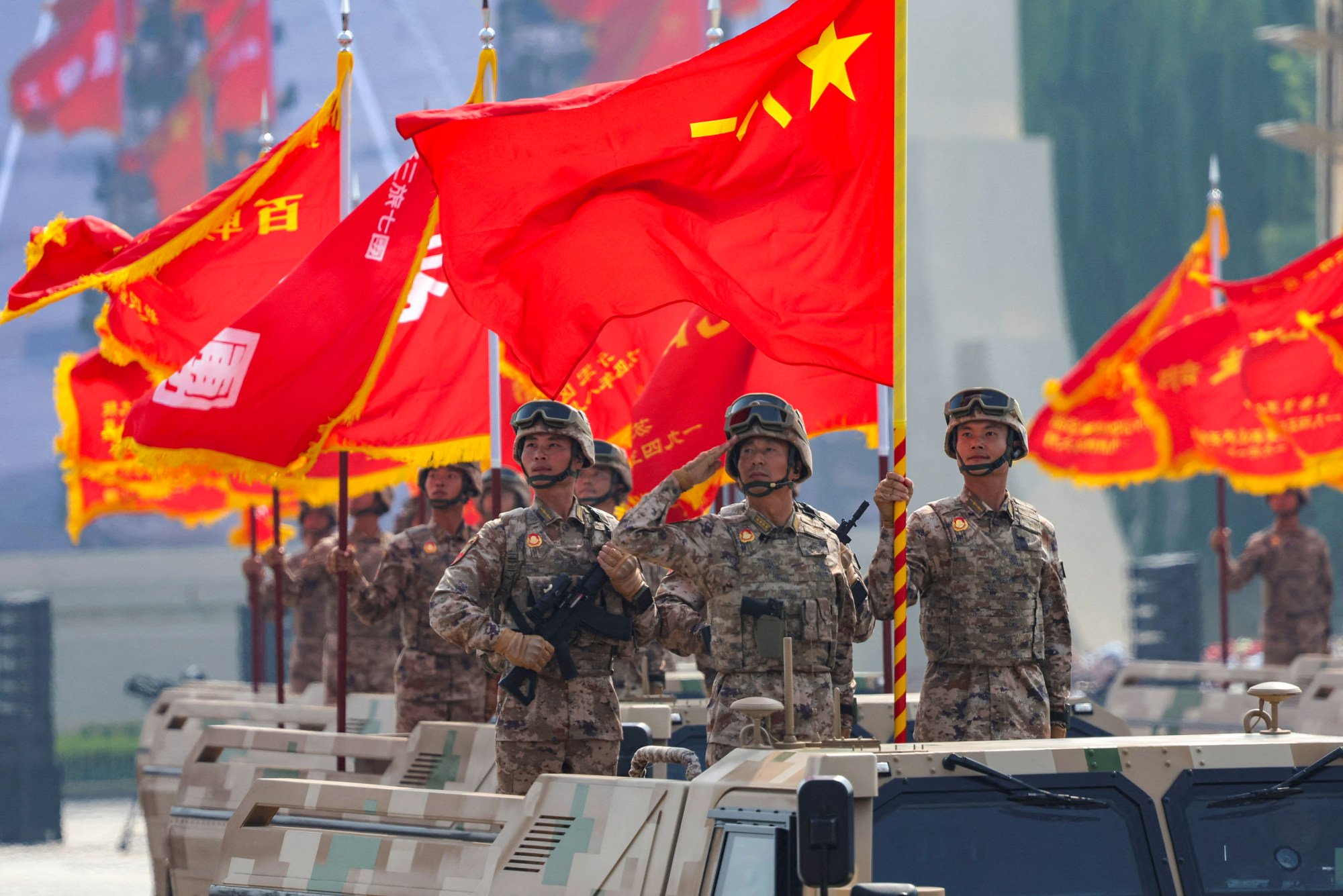
5. World leaders
Some 26 top leaders from around the world – including from Central Asia and Southeast Asia – attended the event, in what was a nod to Beijing’s growing global influence.
Higher ranked leaders from Southeast Asia attended compared to the inaugural Victory Day parade in 2015. They included Indonesian President Prabowo Subianto and Malaysian Prime Minister Anwar Ibrahim. Prabowo initially cancelled his trip to China due to widespread protests at home but on Tuesday said he would attend the parade.
Only two heads of government from Europe attended the event, namely Serbian President Aleksandar Vucic and Slovak Prime Minister Robert Fico.
But foreign troops were notably missing from the parade this time, a contrast to the previous World War II commemoration in 2015, when nearly 1,000 soldiers from 17 countries joined the march. This year’s march-past was exclusively Chinese.
